Falling for Women Artists
A road trip with Pacita Abad, Marisol, Wilhelmina Godfrey, and Kay Ryan
It was the day after Christmas. First, I fell out of the car. We were just blocks from the house but I got out to mail a letter in a postbox and my foot tangled in my handbag strap and down I went onto the pavement. I lay there like a roped calf for a moment, assessing the damage. “Do you want to go back home for some Tylenol? an ice pack?” my husband asked as I stood up, gingerly. “No— let’s go.” After all, I’d be sitting in the car for hours so I didn’t need my knee.
Second, I bought a new thick fluffy scarf at an outlet mall when we stopped to get our daughter her choice of Christmas gift. It was perfect for this cold weather trip to Ann Arbor, Toronto, and Buffalo. Over the course of the week I was away it kept me warm and shed lint all over me. I’d pluck at the tiny brown flecks, to no avail. The lint roller worked for about ten minutes, then I was covered again. Appearances aren’t everything, I thought.
Here are some works I fell for on my art road trip:
At the University of Michigan Museum of Art I saw Silver Linings, art on loan from the Spelman College Museum of Fine Art. This Historically Black College has built an impressive collection of art by alumni and other Black artists, most of whom were unknown to me before. The Ann Arbor exhibit was beautifully installed and included this striking work, literally over-flowering with energy, by contemporary artist Firelei Báez.
We wandered through the red-walled African galleries to an inviting room filled with bright floral wallpaper that hosted Hey, We Need To Talk, an interactive space organized by Philippa Pham Hughes to facilitate conversations over meals between people from different sides of the political spectrum. By the time I circled these rooms my knee felt better.
At the Art Gallery of Ontario (AGO) in Toronto, on the last day of the year, I met fellow Substacker
in person to see the Pacita Abad retrospective. I had planned this whole road trip around Rona’s recommendation of the Marisol exhibit at Buffalo’s AKG Museum, which was a unique opportunity to see the whole body of work. The Abad exhibit was also Rona’s idea, and a surprise and delight to me. The Filipina artist worked primarily in textiles, which is normally not my thing, but the sheer bursting creativity and vitality of these huge panels won me over. They also were well hung to display the reverse sides, which created a parallel work of outlines and shadows, in all their hand-stitched glory.And I got to see them all with Rona, who was a wonderful guide through her home museum. We wandered through galleries of Canadian art as she showed me and my husband some of her favorites, who were mostly new to me too.
Then, at the Buffalo AKG Museum (formerly the Albright Knox gallery, but recently renovated and reopened), I got to see the Marisol retrospective in its last days. Again, the sculptural constructions the artist is best known for are not normally my favorite medium. I prefer two dimensions (Rona and I stood in the Henry Moore room at the AGO and discovered neither of us quite “got” sculpture). Nonetheless, like with the Abad exhibit, I found Marisol’s exuberant personality impossible to resist. Even as a young woman in the 1960s she did her own thing, critiquing patriarchy by placing masks of her own face on powerful figures carved by her own hand and satirizing domesticity with oversized rough-hewn babies and family groups. Her life, from her birth in Venezuela to studying art in Paris and New York, was full of privilege but she hacked her own path anyway.
On our way back to the hotel to collect our bags and car, we stopped at the Burchfield Penney Museum, the campus museum of Buffalo State University. We had no time left. But it was worth going in to get a sense of Wilhelmina Godfrey’s long and varied career in the retrospective I am what I am. Like Abad and Marisol, Godfrey gobbled up influences from all over the globe and made them her own, with a keen eye and skilled hands.
That is what I find especially moving about women artists like Abad, Marisol, and Godfrey, and photographers like Julia Margaret Cameron, whom I’ve written about here and elsewhere. I’m fascinated by the unique and idiosyncratic ways they manage to integrate their lives and work in relation to the narrow social expectations for women. Regardless of their personal life choices about marriage or childrearing, they all made professional careers out of exploring and embodying a wide range of female roles— through traditional women’s craftwork like weaving and embroidery, or representing the female body, or playing with loaded iconography. Simply claiming their voices and eyes is a powerful act of self assertion. By doing so, these and other women artists explode the gendered constraints they were born into to make their art into something exciting and open-ended.
Between Toronto and Buffalo my husband and I stopped to view Niagara Falls, as one would. We tried out several different angles, though sleet fell from the sky and mud and ice covered the ground. The best viewpoints on the American side were closed due to dangerous conditions so we made do with what we could see from under our flapping umbrellas. What another elemental force that is! The Niagara River cut a narrow gorge to connect Lakes Erie and Ontario and the results are breathtaking in their power and drama. The landscape effortlessly evokes the sublime of the Romantic poets, even against the depressed backdrop of Niagara’s Main Street, but I thought first of Kay Ryan’s The Niagara River, which I used to teach occasionally:
As though
the river were
a floor, we position
our table and chairs
upon it, eat, and
have conversation.
As it moves along,
we notice—as
calmly as though
dining room paintings
were being replaced—
the changing scenes
along the shore. We
do know, we do
know this is the
Niagara River, but
it is hard to remember
what that means.
Honestly, I am not fully at home with poetry either, though it makes much more sense to me than sculpture. But look at these line breaks! Whatever the poem “means” (“what that means”!) the lines move beautifully. I typed it here by hand just now and reveled in hitting return with my pinkie finger to punctuate each lovely bit. It flows.
It is is a difficult poem to visualize (“we” are on the river, floating downstream, at a table?) but easy to read or recite. Ryan plays with pause and rhythm by sprinkling very spare punctuation (two dashes, six commas, three periods) to great effect. I also enjoy the timely reference to dining room paintings, which I have indeed recently changed.
What does the Niagara River “mean”? Here the poem seems to imply that time passes inexorably, right now in the present tense and always—rushing us to a cataclysm we both know but don’t know— the Falls themselves. Those falls are such a common metaphor for impending disaster that Thomas Carlyle used them in his diatribe against extending the vote in “Shooting Niagara: And After?” (1867).
I’ve drifted far from my own fall here. I’ve interwoven text and image, which is always a useful writing strategy for essays: find a common theme (women artists) and look at a few specific examples closely. I intentionally chose artists and museums you might not know, as I hadn’t, to spread their works. I could spend more time with each one, of course, but I want to fit them all in here. The current claims them, and me, and sweeps us away.
Thank you for reading! I have some more close readings of art and literature lined up so stay tuned. I appreciate shares, likes, and reposts and respond to all comments. If you have the means and inclination, I gratefully accept paid subscriptions to support my writing, though my posts are all free. Til next time—

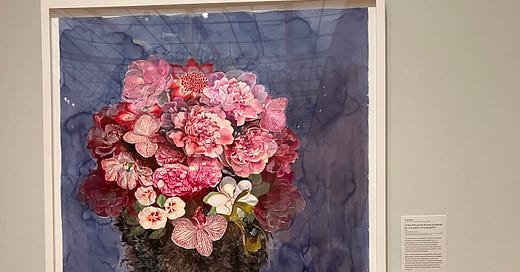



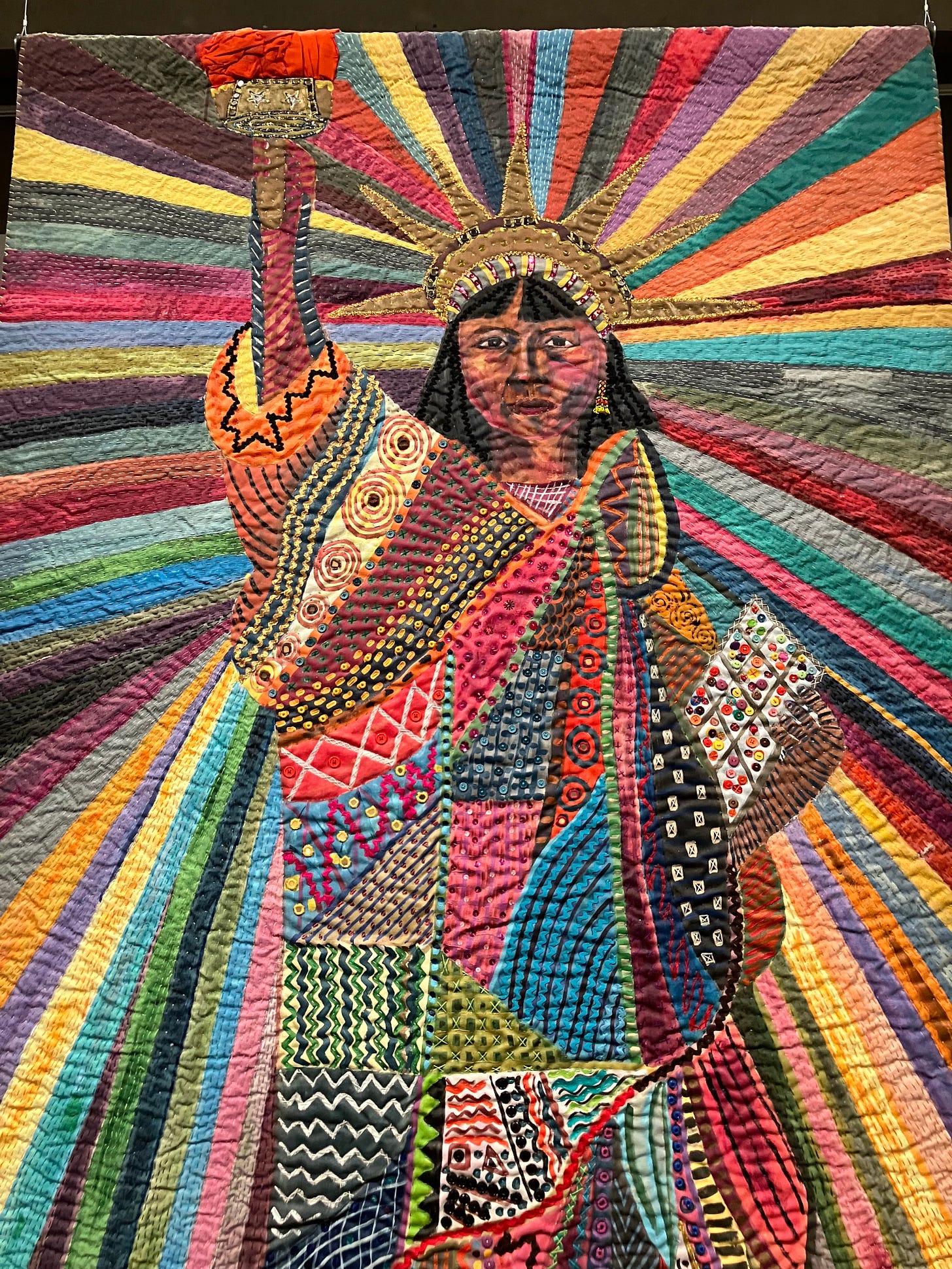
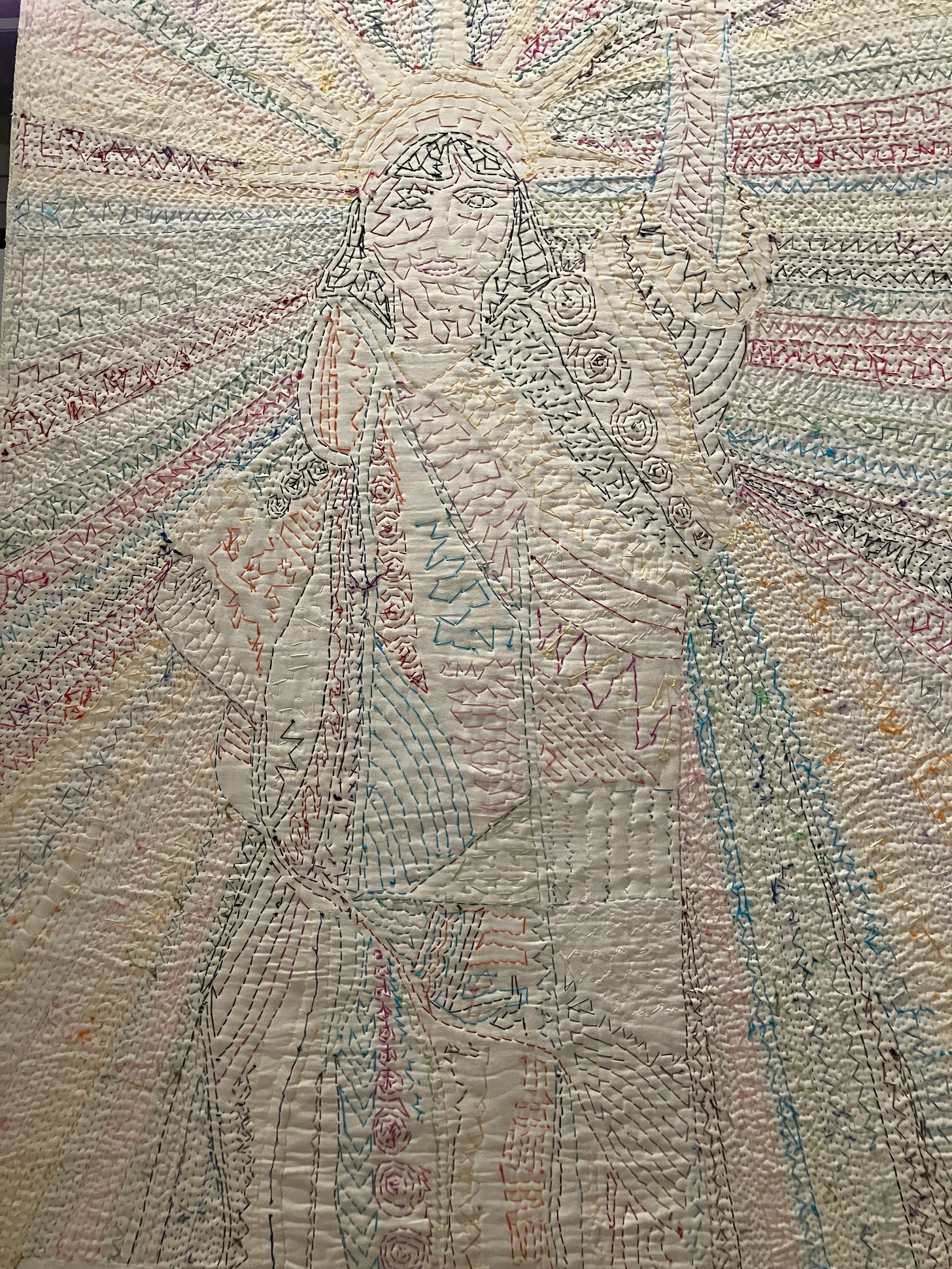
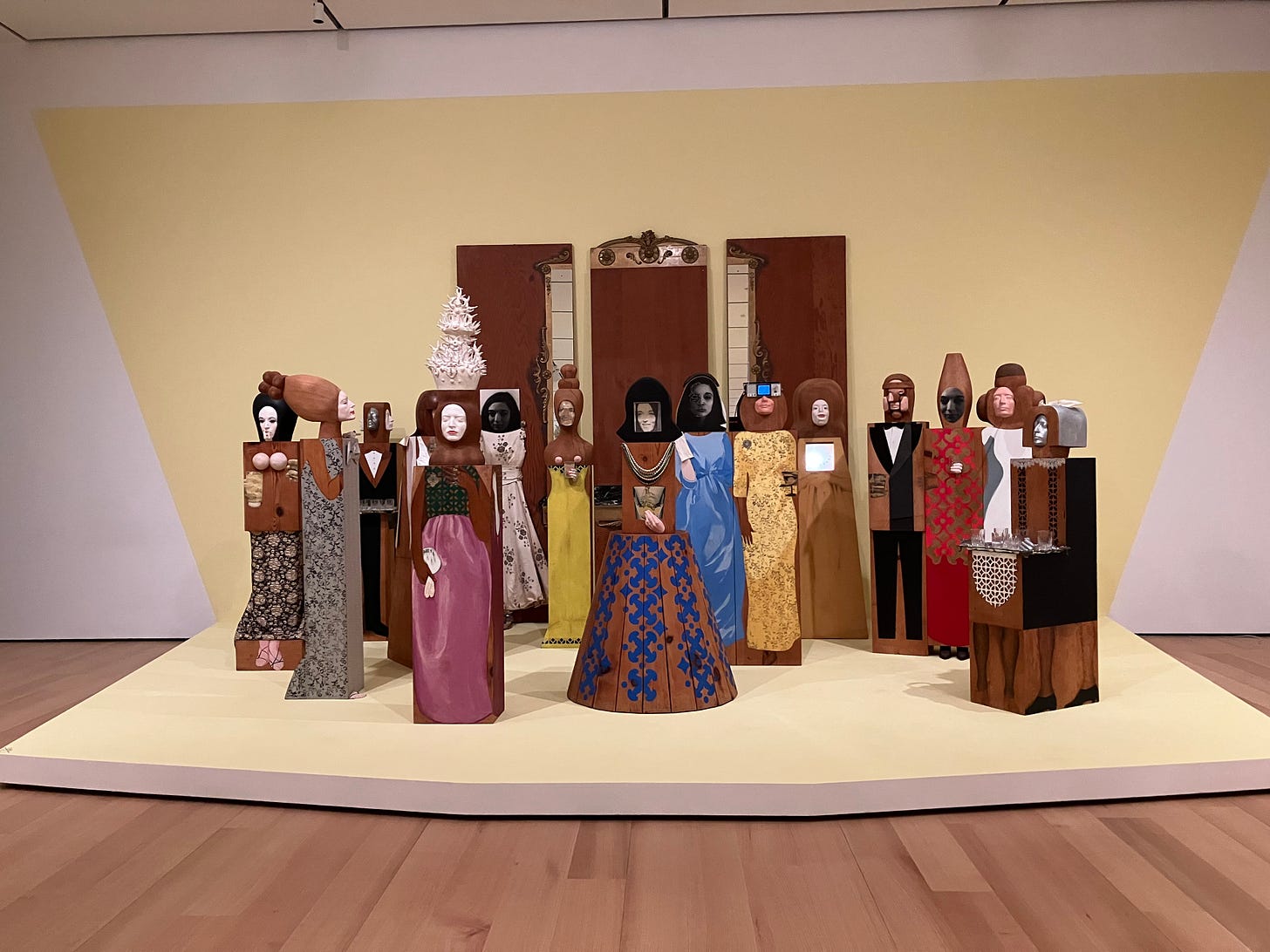
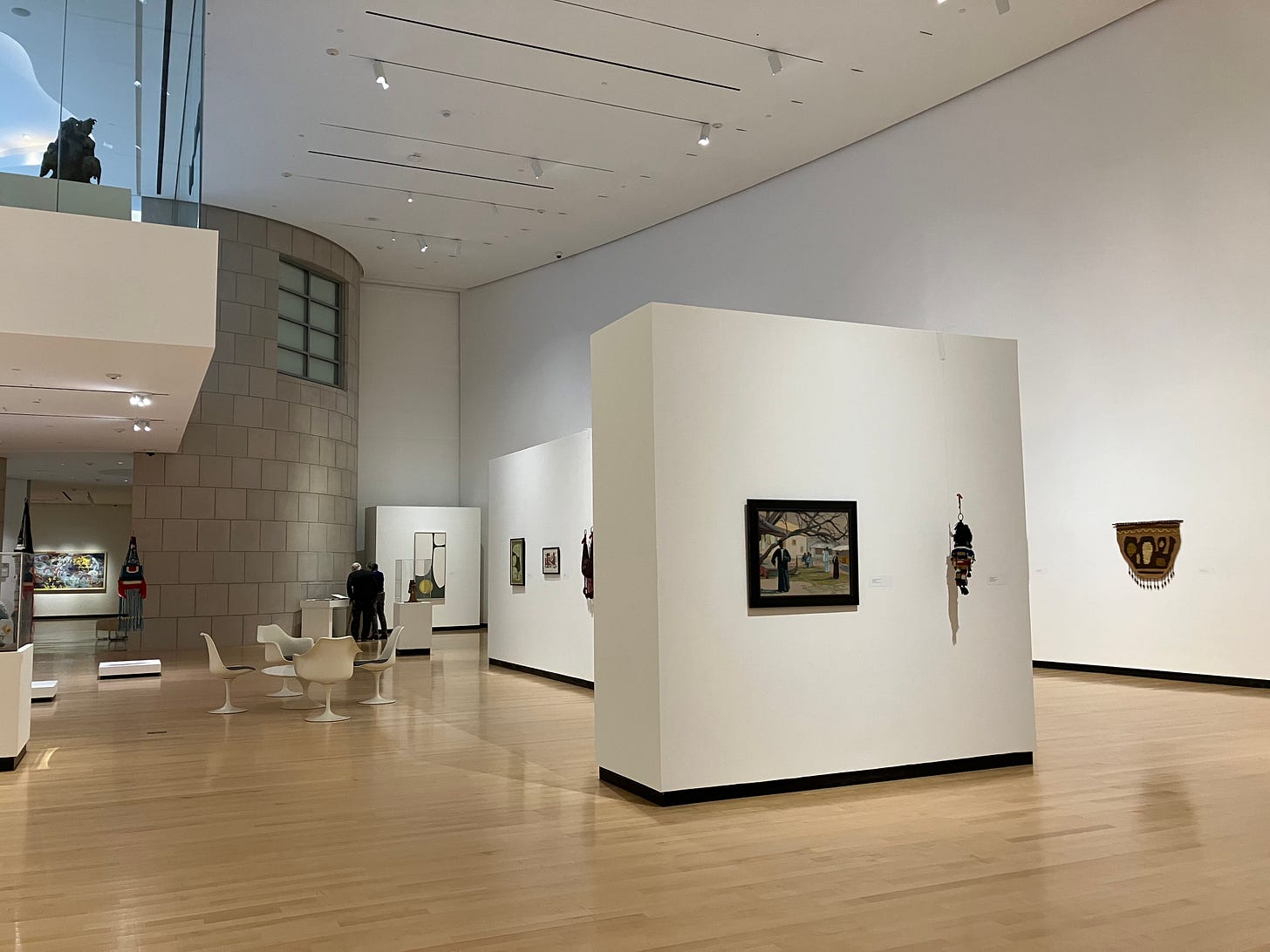
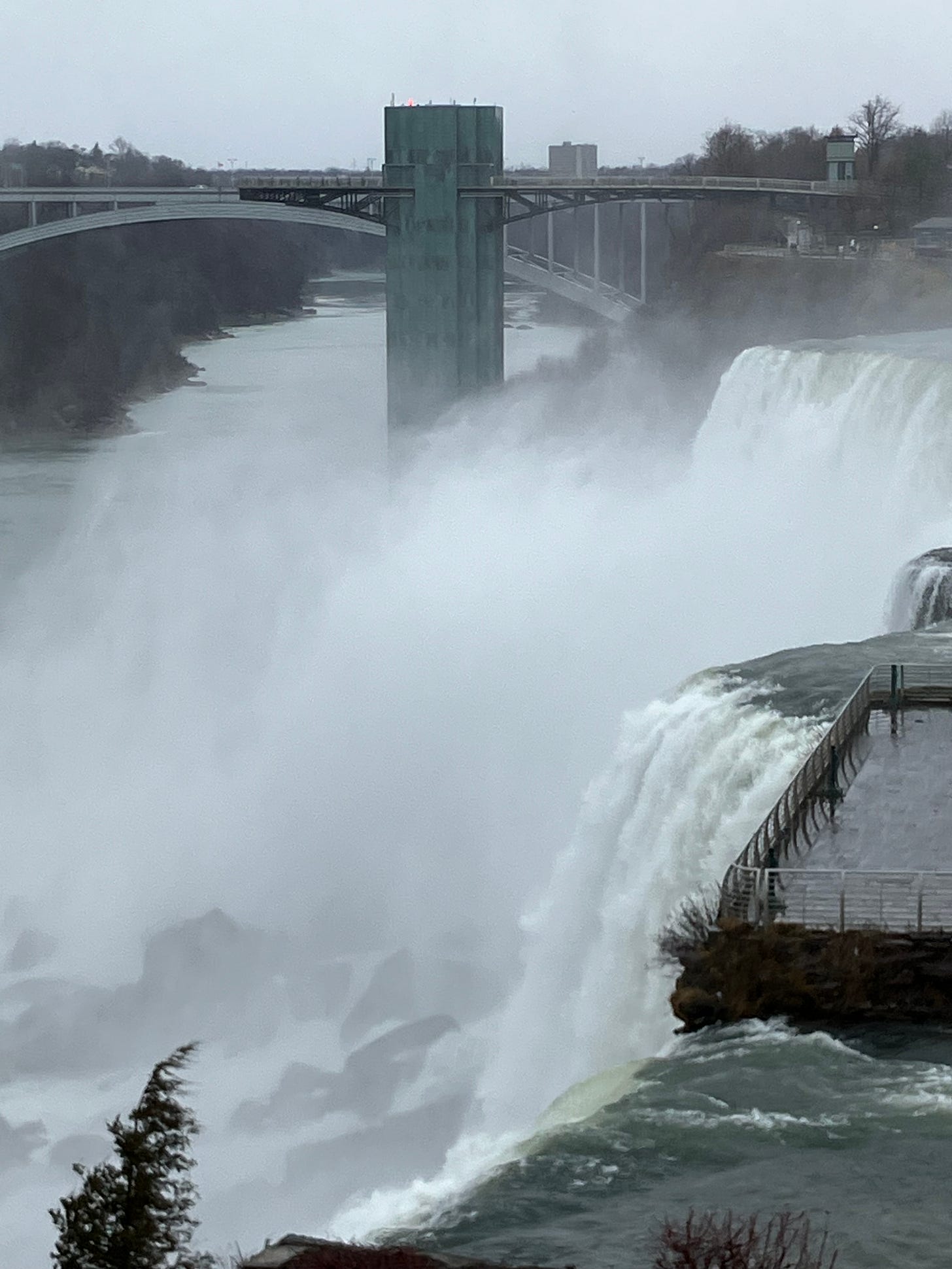
Victoria, I was delighted to meet you at the AGO and to read this essay linking the women artists you discovered on your journey. Firelei Baez is a familiar name. I love the piece you selected and think I’ve seen another somewhere.
Wonderful! I loved your refections on the artists, the move from your fall to the Falls, and it's beguiling to think of you and Rona together gazing skeptically at the Henry Moores...